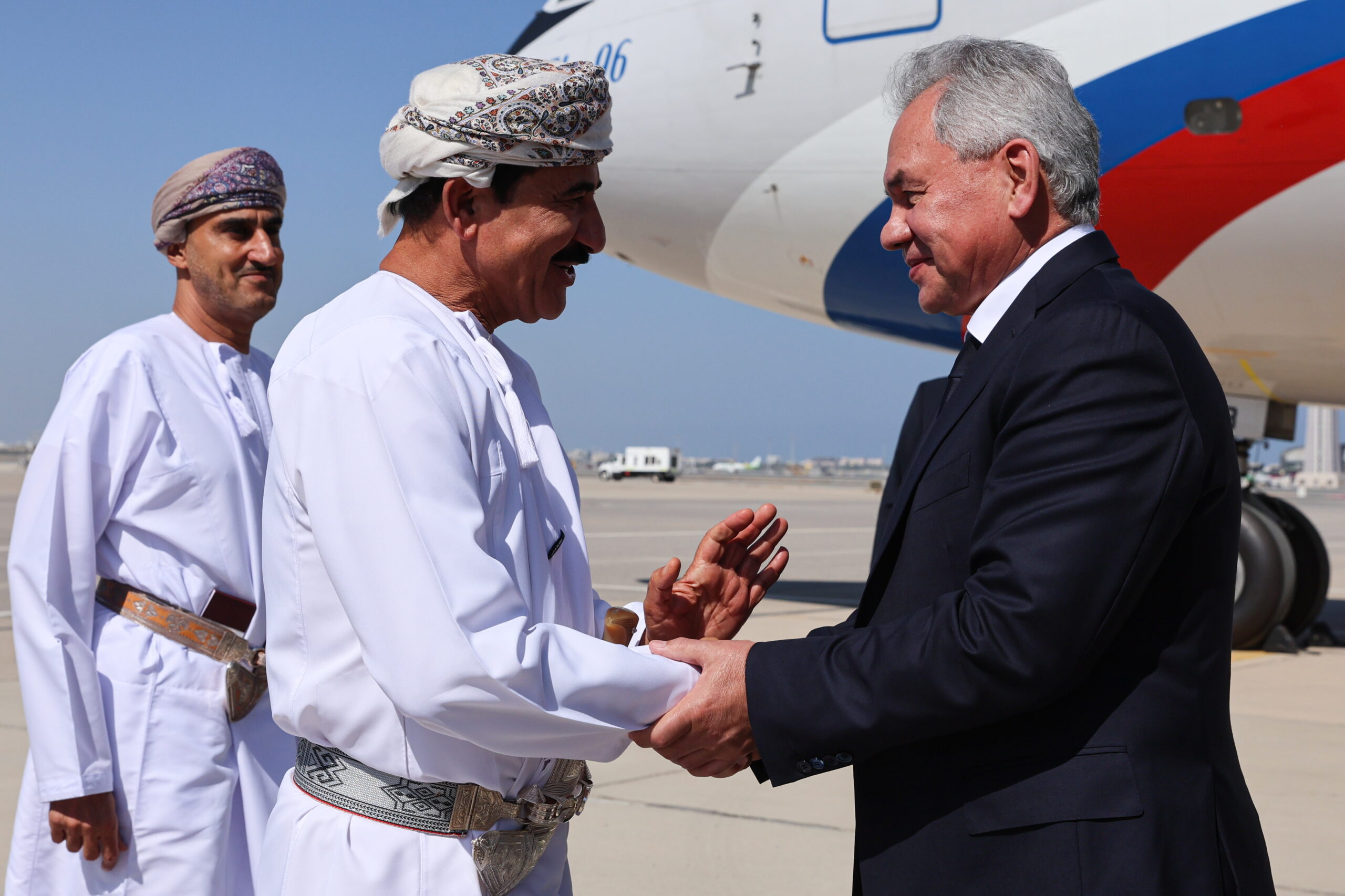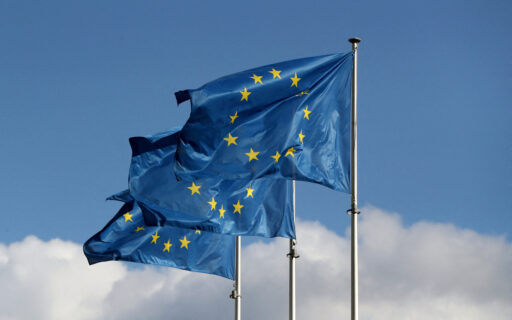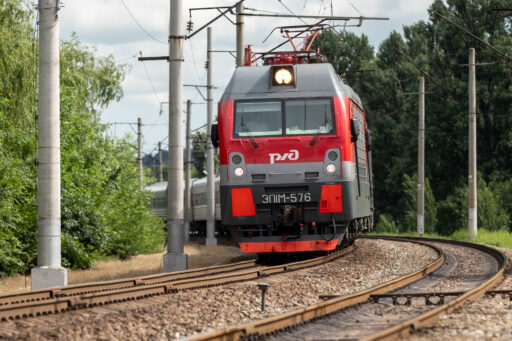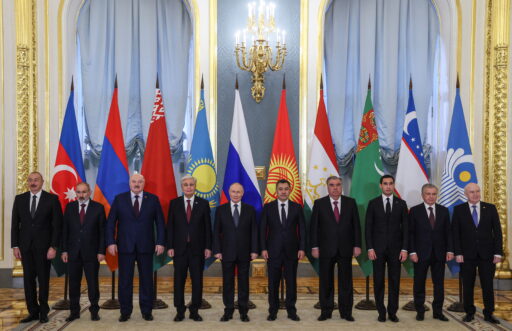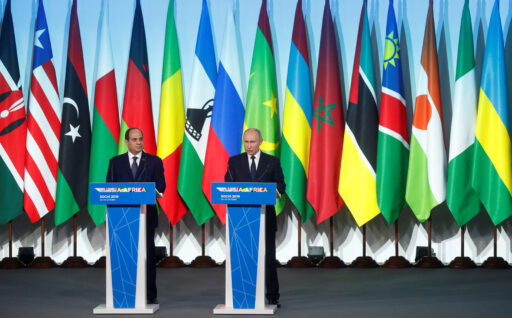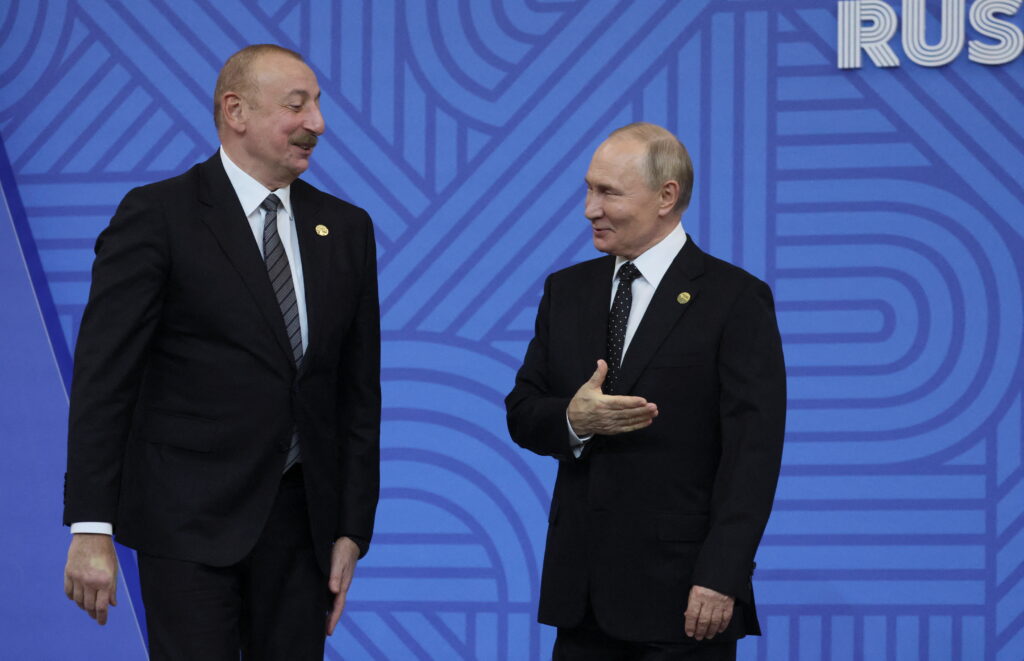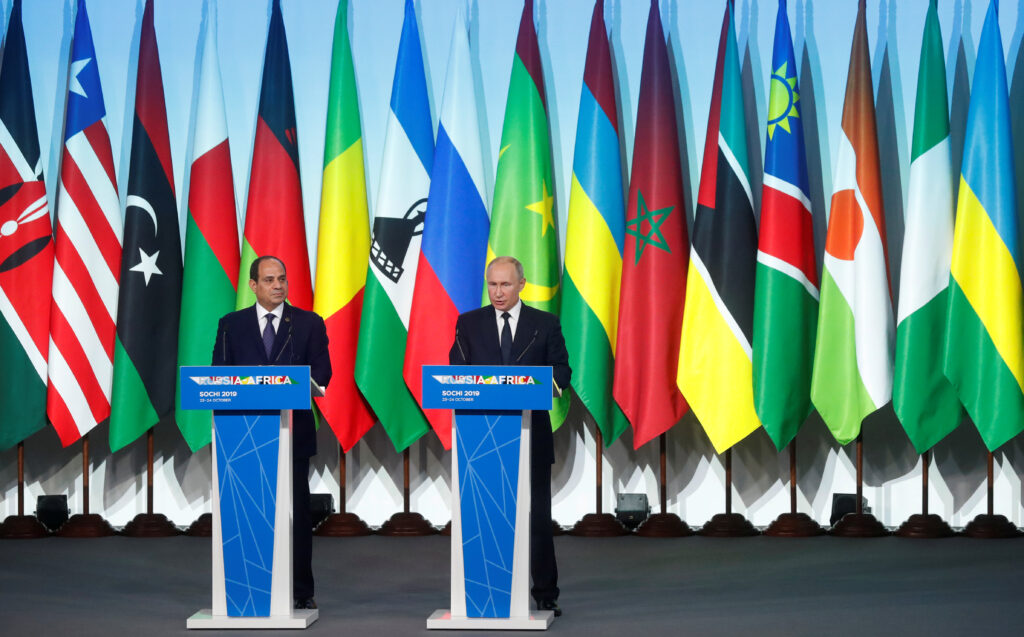The past three years have marked a pivotal shift in Russia’s foreign policy priorities across Middle East and North Africa (MENA). Moscow’s regional engagement has evolved into a far more multifaceted—and often contradictory—affair, both in terms of the depth of its involvement in local dynamics and the objectives it pursues amid mounting constraints. This transformation has been driven by seismic global geopolitical upheavals: Russia’s full-scale invasion of Ukraine in February 2022, the collapse of Bashar al-Assad’s regime in late 2024, and the Iran-Israel conflict in 2025.
Each of these shocks has delivered blows to Russia’s regional posture—yet, in a twist of irony, they’ve also yielded unexpected upsides. Too often, though, the international commentariat has fixated on the downsides, underplaying the resilience and adaptability of Moscow’s approach. The result? A skewed narrative that misses the fuller picture. Two cases in point stand out.
Take the Ukraine war. Pundits—some of them heavyweight analysts—rushed to conclude that the invasion would drain Russia’s military and diplomatic bandwidth, forcing a retrenchment from the Middle East and beyond. That call hasn’t aged well. Despite sanctions and resource reallocations, Moscow has held onto political and military sway in key MENA hotspots.
Or consider Syria. Assad’s ouster in late 2024 prompted hasty obituaries for Russia’s presence there. Reality, however, tells a different story: Syria’s new leadership has signaled a pragmatic willingness to engage Moscow, pointing not to rupture but to recalibration.
That said, we can’t gloss over the negatives. Sanctions have crimped Russia’s economic and military toolkit, hamstrung its crisis-response agility, and stalled megaprojects—like the Akkuyu nuclear plant in Turkey. What’s more, Moscow’s reliance on regional allies, especially Iran, Turkey, and Gulf states, has deepened. Still, a holistic view reveals layers of nuance that defy black-and-white verdicts.
A Transformed Presence
Contrary to doomsayers, these crises and conflicts haven’t erased Russia’s MENA footprint—they’ve reshaped it. Moscow has grown nimbler, dialing back on overt military footprints in favor of diplomatic footwork, energy and economic levers, and brokerage roles.
Relations with Iran offer a prime illustration. Russia couldn’t muster tangible military backing for Tehran during its 2025 clash with Israel, yet bilateral ties didn’t fray. By fall 2025, Iran was signaling interest in sustaining—and even scaling up—cooperation, particularly in defense tech, transport, and energy. This underscores Russia’s enduring appeal as a partner, especially against shared Western headwinds.
In essence, post-2022 Russia has adopted a leaner, savvier model of MENA engagement—one that’s less resource-intensive but politically sharper. Where the 2010s hinged on power projection and influence grabs, the 2020s lean on risk calibration: preserving leverage at bargain-basement costs. Moscow blends low-visibility escalation tools with targeted de-escalation plays, positioning itself as indispensable without overcommitting.
This playbook—evident in Libya and Syria, the Israeli-Palestinian track, and dealings with Iran and the Gulf—rests on five core tactics:
- Segregating Engagement Tracks. Russia compartmentalizes friction points from cooperative ones, ensuring disputes in one domain don’t torpedo gains elsewhere. This lets Moscow spar with a partner on security matters while teaming up on energy or trade. It affords deft navigation of clashing regional agendas—pitting Israel against Iran, or Saudi Arabia against Turkey—while keeping channels open to all sides, unburdened by exclusive alignments.
- Forging Ad Hoc Alliances with Regional Players. These fluid, short-term pacts target objectives in third-party MENA states or adjacent theaters like Africa.
- Wielding Energy and Trade as Influence Tools.
- Coercive Diplomacy on a Leash. Via arms deals and minimal military footprints in host nations.
- Opportunistic Brokerage Diplomacy.
In hotspots, these tactics reveal consistent patterns. Russia routinely floats cease-fire bids. When needed, it assembles tactical coalitions for gains in proxy arenas—think UAE and Turkey in Libya, or Saudi Arabia in Sudan.
In Libya, the Kremlin’s endgame is straightforward: secure oil fields, minerals, and ports without owning the war. Post-2022, its balancing act has sharpened. On one flank, reports highlight ramped-up ties with Khalifa Haftar’s eastern forces—Russian arms and air defenses ferried from Syria, infrastructure upgrades under Moscow’s watch. On the other, the Kremlin courts Tripoli’s internationally backed government, ramping up diplomatic outreach and economic overtures in the capital.
Syria remains a bastion of coercive clout, courtesy of bases and airspace dominance. Russia shapes outcomes via Turkey deals and tactical indulgence of Israeli strikes, keeping pressure points live on all fronts.
On the Israeli-Palestinian front, Moscow amps up diplomatic and info-ops visibility without tangling militarily with Israel. Backing anti-Israel factions serves mainly to tweak the West and woo Arab street cred—at rock-bottom costs.
With the Gulf and Iran, Russia hedges: deepening defense and economic bonds with Tehran while boosting OPEC+ ties, trade, and investments with Riyadh and Abu Dhabi. This casts it as both spoiler and stabilizer.
Even if wins aren’t instant, these moves keep Moscow in the conversation, frustrating isolation bids. Info campaigns amplify the vibe, framing Russia as a champion of «sovereign stability» against Western «double standards«—a pitch that resonates with the region’s security-minded elites.
Moscow’s Objectives
The Ukraine war reordered Russia’s MENA priorities, elevating sanctions evasion to the top slot. Pre-2022, regional economic links softened Western hits and diversified bets; now, they’re evasion machinery. Moscow has cribbed from Iran’s sanction-survival playbook, grafting Tehran-tested hacks onto its own circuits. Across the Gulf and beyond, it’s spun up shadow finance webs, parallel supply chains, and shell networks to safeguard trade and cash flows.
This recasts MENA’s role for Moscow along four axes.
First, as a lifeline amid Western siege. Post-2022, the Gulf has emerged as a stability anchor via «parallel pipelines.» Trade with top Gulf Cooperation Council (GCC) players has surged: Saudi volumes from $ 2.2 billion in 2021 to ~$ 3.3 billion in 2023; UAE from ~$ 5.3 billion to ~$ 11.2 billion over the same span. Russia has rerouted oil and gold exports Gulf-ward—Reuters pegs 75.7 tons of Russian gold ($ 4.3 billion) to the UAE in 2022−2023 alone. In finance, Russian banks have stood up dirham- and yuan-denominated correspondent accounts in Dubai and Doha, sidestepping dollars. From re-exporting dual-use tech to shadow shipping and non-bank swaps, the Gulf has become the linchpin of Russia’s «survival economy,» shielding vital flows from Western writ.
Second, operationalizing the «pivot to the East”—a Moscow mantra for over a decade. Economically, this catapults MENA, Gulf in particular, into a logistics nexus linking Russia to South Asia, Africa, and even Europe. The International North-South Transport Corridor, Iranian route expansions, and UAE/Saudi stakes in logistics grids have made the region not just a partner, but a cornerstone of Russia’s remapped trade map.
Third, born of all-out Western showdown: MENA as a flank for asymmetric jabs, widening the clash beyond Ukraine. Pre-2022, Moscow soft-pedaled anti-Western framing to avoid alienating locals. Now, treating the rift as permanent, it weaponizes the region for power projection and European distraction—in Libya, Sudan, the Sahel, and Africa at large, eroding EU clout and diluting focus on Kyiv.
Finally, a fresh conceptual twist: MENA as a seamless strategic theater, blurring old geographic lines. Since 2022, Moscow views it less as a Western bulwark and more as a launchpad for African outreach. In this light, the region knits a broader geopolitical web, channeling Russian aims from the Eastern Mediterranean to the Indian Ocean.
The transformations of recent years have elevated the Middle East’s significance for Russia to levels far surpassing those of the early post-Soviet era—and perhaps even the imperial past. If, in the early 2000s, the region was merely one vector of foreign policy, it has now emerged as a cornerstone of Moscow’s reimagined global architecture. This framework not only sustains Russia’s economic survival but also safeguards its political autonomy and symbolic stature as a great power amid mounting international isolation.
At the same time, the old distinctions between the «classical» Middle East (the Levant and Gulf states) and the «Western» Middle East (North Africa and the Eastern Mediterranean) have lost much of their relevance. Russia is redrawing its geographic map of priorities, with the Persian Gulf states now at the forefront as indispensable partners—both economically and diplomatically.
Today, the region’s countries can be grouped into distinct categories, each defined by its unique dynamic with Moscow:
- Core Gulf Partners: Saudi Arabia, the UAE, Kuwait, and Qatar. These nations have become the linchpins of Russia’s Middle East strategy. Moscow views them not just as investors, energy allies, and trading counterparts, but also as tactical enablers for evading sanctions and shaping policies toward third parties—whether in the region or beyond.
- Soviet-Era Heirs: Syria, Iraq, and to some extent Algeria and Egypt. Here, Russia leverages nostalgia and the institutional legacies of the USSR to maintain a symbolic footprint and room for diplomatic maneuvering.
- Peripheral Partners and «Opportunity Arenas»: Libya, Sudan, and Yemen. These are not top-tier priorities, but they serve as tactical venues for projecting limited military presence, harvesting political gains, or executing targeted influence operations.
The Weight of Regional Dynamics
Russia’s foothold in the Middle East today is shaped by three interlocking dimensions: the global «great game» pitting Moscow against the West; Russia’s own regional ambitions; and, crucially, how Middle Eastern states perceive and position Russia within their strategic worldviews.
Since 2022, the interdependence between Russia and the Middle East has deepened markedly. The region has assumed critical importance for Moscow beyond energy (via OPEC+), extending into other strategic domains. Notably, Russia has carved out a prominent role in the region’s food security. It now ranks as one of the top—and often dominant—wheat suppliers to Egypt and the Gulf states. In 2024, for instance, Egypt imported roughly 14.7 million tons of wheat, with 74.3% sourced from Russia.
Moreover, Moscow is wielding the nuclear card as a potent tool for bolstering influence—not only through megaprojects like nuclear power plants in Egypt, Turkey, and Iran, but also by championing small modular reactors (SMRs), which have piqued interest across several regional capitals.
Equally vital is the burgeoning energy interdependence. Russia has emerged as a key diesel fuel supplier to Saudi Arabia, enabling Riyadh to curb domestic oil consumption and ramp up crude exports. This, in turn, fuels revenue streams for Saudi economic diversification efforts. In essence, Moscow is positioning itself not merely as a partner, but as an enabler of broader regional energy resilience.
A pivotal driver in Moscow’s ties with the region is the opportunism and pragmatism of Middle Eastern political elites. They do not see the Ukraine war as their fight; instead, they regard it as a wellspring of fresh political and economic upsides. The geopolitical flux has empowered them to diversify external alliances and sharpen their bargaining leverage in the trilateral tug-of-war among the West, Russia, and China.
Moscow slots neatly into this calculus. It dangles tangible incentives: from sanction-circumvention schemes to infusions of Russian capital into Gulf finance, construction, and IT sectors. For countless Russian firms and professionals, the Middle East has become a safe harbor—a bridge to the global economy that sidesteps restrictions.
Finally, the affinity of political cultures cannot be overlooked. For the region’s security-oriented authoritarian regimes, the Russian model resonates more intuitively than its Western counterpart. It is cast as a viable alternative to liberal democracy: a blueprint for «sovereign stability,» where the state retains ironclad control over order and society, insulated from external ideological pressures. Coupled with widespread disillusionment toward U.S. leadership and a push for diversified partnerships, this has fostered an organic convergence—not just with Russia, but with China as well.
To be sure, no one in the region harbors illusions about Russia’s capacities. It is a diminished power: the war, sanctions, and technological silos have eroded much of its potential, leaving resources woefully mismatched to the ambitions of its ruling elite. Yet, paradoxically, this very vulnerability has endowed Moscow with a certain agility and appeal. Russia demands no ideological fealty, imposes no political strings, and serves as an actor whose engagement unlocks pragmatic opportunities for its partners. In this niche, Russia thrives—not as a hegemonic force, but as an adaptable, low-overhead ally that many in the region deem a shrewd bet.
